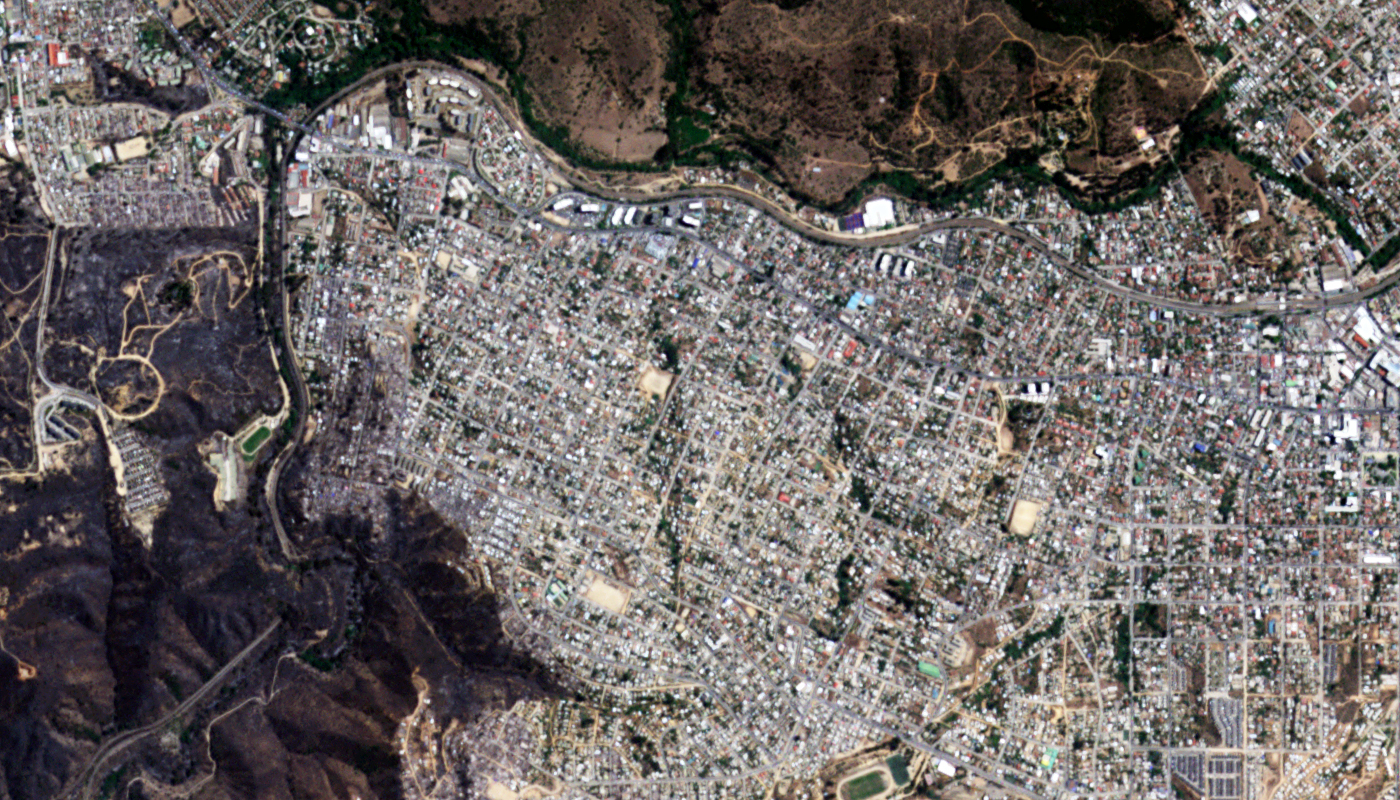PlanetScope Satellite Imagery Samples
Click on the expand button for a larger view of each image. You can also right-click and save any of the examples to your computer for a full resolution view.
The PlanetScope Advantage
Planet launched their first Dove microsatellites in 2015 with multiple launches in subsequent years. As of 2022, over 240 PlanetScope microsats were orbiting the planet, providing daily imagery of most Earth’s landmass at 3-meter resolution with 4 multispectral bands (i.e. blue, green, red and near-infrared [NIR]). SuperDoves launched since 2019 feature 3-m imagery with 8 multispectral bands, adding in valuable coastal blue and red edge data.
Planet continues to improve their Doves with multiple launches each year – a major differentiator to macrosatellites like WorldView-3 which only improve every 5 to 10 years with each new launch. For instance, Doves commissioned in late 2018 and beyond use new high-performance butcher-block filters which combine consecutive frames to create color and MS composite images. And SuperDoves launched since 2019 have eight spectral bands, including coastal blue and red edge.
Below is the least expensive, color PlanetScope data offered. Prices increase for new collections, monitoring and data processing. Note that academic and volume discounts are available.
- Data Source: archive
- Minimum Order Size: 250 sq km
- Product Type: georeferenced + natural color or 4/8-band
- Price Per Sq Km: $2.25 (more detailed pricing can be found here)
For an exact quote, please contact our Sales Team at sales@apollomapping.com.




























